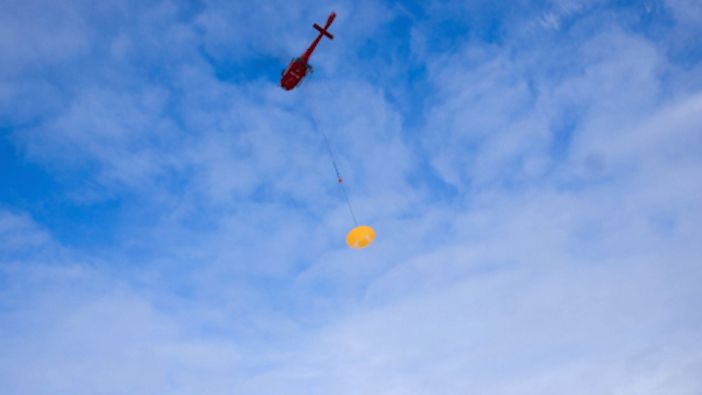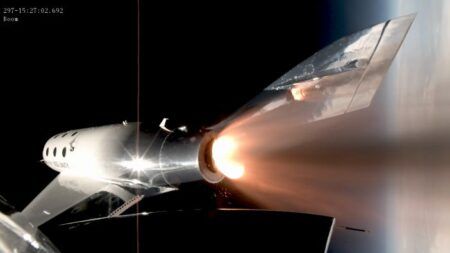The parachute test for the ExoMars mission (Image: European Space Agency)
Engineers at the European Space Agency have deployed the largest parachute ever to fly on a Mars mission in the first of a series of tests for the ExoMars mission.
The ExoMars mission will launch in July 2020, and will deliver a rover and a surface science platform to Mars in March 2021.
The rover will be the first of its kind to drill below the surface and determine if evidence of life is buried underground, protected from the destructive radiation that impinges the surface of the planet today.
The rover and science platform are contained within a single carrier. Shortly before reaching the atmosphere, a descent module will separate from the carrier and a heatshield, parachutes, thrusters and damping systems will reduce its speed, delivering the rover and platform safely to the surface.
The latest test was conducted on the 35m-diameter second main parachute in the sub-zero conditions of Kiruna, Sweden last month. The test demonstrated the deployment and inflation of the parachute with its 112 lines connected to a drop test vehicle, via the deployment of a smaller 4.8 m-wide pilot chute.
The complete parachute system, weighs a total of 195kg and is stowed in a dedicated canister. The second main parachute is 70kg and has 5km of cords. This has to be folded and inserted in a precise way – a process that takes around three working days – to ensure it deploys correctly.
The assembly was lofted 1.2km above the ground with a helicopter, and the sequence initiated after the vehicle was released. About 12 seconds after the pilot chute was inflated, the second parachute release was triggered.
GoPro cameras on the 500 kg test vehicle looked up at the parachute inflation, and onboard equipment sent telemetry in real time as it descended in about two and a half minutes to the ground.
“The successful deployment of our large ExoMars parachute using a smaller pilot chute and its subsequent stable descent without damage, is a major milestone for the project,” said ESA’s Thierry Blancquaert, Schiaparelli Manager, on the ExoMars mission team.
“It was a very exciting moment to see this giant parachute unfurl and deliver the test module to the snowy surface in Kiruna, and we’re looking forward to assessing the full parachute descent sequence in the upcoming high-altitude tests.”
That testing will see the equipment dropped from a stratospheric balloon from nearly 30 km, to more accurately represent the low atmospheric pressure on Mars – a vital aspect when considering parachute inflation.
The subsequent tests will also investigate the full parachute deployment sequence, which comprises two main parachutes, each with a pilot chute.
The dual parachute approach accommodates the much heavier descent module of the ExoMars 2020 mission – some 2000kg compared with nearly 600kg of the previous mission.
April 19, 2018





